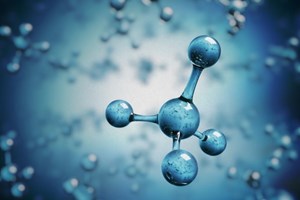Biden administration's new methane rule to hamper U.S. oil, gas production, trade associations warn
(WO) – On Saturday, Dec. 2, the Biden administration unveiled a new methane emissions rule at COP28 aimed at “sharply reducing methane and other pollutants from the oil and natural gas industry” by “promoting the use of cutting-edge methane detection technologies,” according to a news release from the U.S. Environmental Protection Agency (EPA).
The news release stated, “Among other things, the final rule will phase in a requirement to eliminate routine flaring of natural gas that is produced by new oil wells; require comprehensive monitoring for leaks of methane from well sites and compressor stations, while giving oil and gas companies flexibility to use low-cost and innovative methane monitoring technologies; and establish standards that require reductions in emissions from high-emitting equipment like controllers, pumps, and storage tanks.”
The final rule also includes a “Super Emitter Program” that weaponizes so-called “third-part experts” to detect methane releases from oil and gas wells.
Oil and gas industry trade associations such as the Energy Workforce and Technology Council admonished the new ruling, warning that the regulation will hamper U.S. energy production. The American Petroleum Institute and the IPAA also released commentary that supports methane reduction and acknowledges the work the oil and gas industry has already done and continues to do to reduce emissions.
Energy Workforce and Technology Council comments. “While Energy Workforce shares the Administration’s goal of lowering methane emissions, we believe yesterday’s final rule will serve as a new tax on American energy production at a time when this industry could not be more vital. The implementation of a new tax on the oil and gas industry will directly impact the ability of Americans to obtain energy to fulfill daily needs, increasing the cost of oil and natural gas prices and decreasing domestic energy security,” said Energy Workforce President Tim Tarpley. “As global energy demand continues to skyrocket in the face of instability overseas, overburdensome regulations are not the answer to reducing methane emissions, technology and industry led initiatives are.”
“Energy Workforce companies have utilized American ingenuity and innovation to create technologies that cut energy usage, reduce methane emissions, detect leaks, and streamline operations,” Tarpley continued. “As an industry, companies are already voluntarily working to rapidly reduce emissions through industry-led initiatives, making the production of oil and gas cleaner, safer, and more cost-effective than ever before.”
Technologies in place include comprehensive methane monitoring, comprised of real-time leak detection that includes the location and rate quantification so that operators can take immediate action to reduce greenhouse gas (GHG) emissions and save costs. Energy Workforce believes the most effective actions should incentivize the creation of these new technologies and streamline and make uniform the requirements under the rule while not creating overly burdensome federal regulations that serve as a tax on domestic energy production.
“We also continue to have concerns about the third-party emissions monitoring under the rule. The federal government has taken unprecedented steps to allow potentially biased third parties to gather data and report emissions to the EPA,” said Tarpley.
American Petroleum Institute comments. "We share the administration’s goal of reducing methane emissions and smart federal regulation can help build on industry’s progress to date. To be truly effective, this rule must balance emissions reductions with the need to continue meeting rising energy demand. We are reviewing the complex rule to ensure it meets that dual objective.”
The U.S. natural gas and oil industry is taking action to reduce methane emissions while continuing to produce affordable, reliable energy. Average methane emissions intensity declined by nearly 66 percent across all seven major producing regions from 2011 to 2021.
API submitted comments on EPA’s supplemental proposed rulemaking in February. In the comments, API emphasized the importance of a practical implementation date and flexibility for the use of alternative detection technologies and the associated gas provisions. API also highlighted the need for permitting reform alongside EPA’s regulations to increase takeaway capacity and enable further methane emissions reductions.
Industry-led initiatives like The Environmental Partnership, whose members make up nearly 70% of the U.S. onshore natural gas and oil industry, are helping to accelerate progress on methane emissions reductions by driving collaboration and sharing best practices across the industry.
IPAA comments. "The Producers Associations will be evaluating the Environmental Protection Agency’s (EPA) federal New Source Performance Standards revisions (Subpart OOOOb) and its Emissions Guidelines (Subpart OOOOc) mandating new state existing source regulations. The new source requirements will impose complicated new requirements, and the 2022 proposed existing source requirements have been estimated to lead to the shutdown of 300,000 of the nation's 750,000 low production wells, wells that are essential to our country’s energy production. The Producer Associations support the cost-effective management of methane and volatile organic compounds emissions related to the oil and natural gas production industry that achieve sound environmental benefits while reflecting the significant differences between aspects of the industry. The Producer Associations are comprised of national, regional, and state associations that represent the full range of oil and natural gas producers from large publicly traded companies to small privately held companies."
The Producers Associations group is made up of the following national and state trade associations: the Independent Petroleum Association of America ("IPAA"), Arkansas Independent Producers and Royalty Owners ("AIPRO"), Domestic Energy Producers Alliance ("DEPA"), Eastern Kansas Oil & Gas Association ("EKOGA"), Illinois Oil & Gas Association ("IOGA"), Gas & Oil Association of West Virginia ("GO-WV"), Independent Petroleum Association of New Mexico ("IPANM"), Indiana Oil and Gas Association ("INOGA"), International Association of Drilling Contractors ("IADC"), Kansas Independent Oil & Gas Association ("KIOGA"), Kentucky Oil & Gas Association ("KOGA"), Michigan Oil and Gas Association ("MOGA"), National Stripper Well Association ("NSWA"), North Dakota Petroleum Council ("NDPC"), Ohio Oil and Gas Association ("OOGA"), The Petroleum Alliance of Oklahoma ("The Alliance"), Petroleum Association of Wyoming ("PAW"), Pennsylvania Independent Oil & Gas Association ("PIOGA"), Texas Alliance of Energy Producers ("Texas Alliance"), Texas Independent Producers & Royalty Owners Association ("TIPRO"), and Western Energy Alliance.



